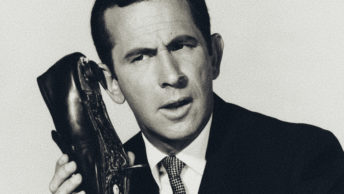There is a proverb that says Curiosity killed the cat. Unsurprisingly, this term has a long and fascinating history. It was first found in a play, Every Man in His Humour, by British polymath, Ben Johnson. Originally, the perpetrator was Care that murdered the cat but in the 19th century Curiosity became the villain. This phrase was first found in a compendium of British, Irish and Scottish proverbs, published by James Allan Mair in 1873.
All this has apparently emanated from the phrase A Cat has nine lives. The suggestion that a cat has so many lives has its roots in Ancient Egypt. The sun-god Atum-Ra was said to have taken the form of a cat so he could visit the underworld, where he gave birth to eight other gods. Some have linked this myth to a cat having nine lives.
In reality, the myth has survived the apparent fact that while a cat only lives to be about 14 years, felines are lucky and can often survive dangerous events or accidents. This myth is likely related to the fact that falling cats from serious heights can twist in midair and land safely on their feet.
Even if this is only myth, legend or folklore, curiosity is not entirely a natural human endeavor. Cats often dispel a sense of curiosity by exploring things that surround their environs. As for humans, any teenager with a little brother or sister knows that many have been tempted to take a life or two of their siblings’ annoying habit of getting into their stuff. My adult daughter may have forgotten how difficult her little brother made her teens but I haven’t. Her problem never affected me because I never had a sibling, that is until that same little brother started getting into my stuff as a teen.
When I was about 10, I must have been bitten or scratched by a curious cat because I started sneaking peeks into my parents’ stuff. They were very secretive about their private lives, especially their ages. They told me they were both 21 when they married. In the Broadway Play, A Cat on a Hot Tin Roof, there was one of my favorite lines, evoked by a main character, Big Daddy, where he said: Mendacity…Mendacity. While snooping in a hall closet, I found documents saying that they had been 39 and 27 when they got married.
My curiosity gradually developed over the ensuing years. It led me to the study of History, courtesy of a wonderful teacher at Xavier High School, the legendary Joe Caruso. He made History so real that I wanted to know everything about it. Since then, I started questioning everything. It was as if my first word had beenWhy.
Historians also need to develop a philosophy of life to be able to ask the right questions. My broad liberal arts college education provided the basic ingredients for my young mind. During Graduate School at St. Louis University, I peppered most of my professors with a menu full of questions. The late Professor Fred Dobney, from Waco, Texas, was my dissertation advisor. To stay on his good side, I bought his published dissertation, The Papers of Will Clayton, an obscure member of the Roosevelt and Truman administrations. He inscribed it as follows:To Bill Borst who I think will make a fine historian when he stops asking questions and starts answering them. I do not know if all the questions history poses to us are answerable but I still question everything I do not understand.
When I had my first teaching job, in Charleston, a rural town in Southeast Missouri, at first very few of my students were curious or daring enough to ask me a serious question. But as the year progressed, I believe that changed a lot. Over the next few decades, my teaching style evolved into more of a Socratic method where I asked most of the questions. I did this because I wanted to get my students thinking about everything. To me the most important thing teachers can bequeath to their students is the ability to think clearly, logically and question everything they do not understand. The answer to the why of things is the door to understanding and wisdom.
Teaching on all levels of education was often very stimulating to me. I challenged my students to put my ideas to the test of their reason. If they disagreed with anything I said, my sole caveat was that they should be prepared to back up their criticism with facts, logically presented. Feelings need not apply. My best classes were when I taught on satellite campuses. Usually, the students were adults who worked for a living and were trying to better themselves. They were hungry for information and facts. I gladly fed them to the best of my ability.
This worked very well until my last semester at Maryville University in the mid-nineties.That class was ill-prepared for college history and I was forced to spend a third of my time teaching remedial history so that they would have a few bricks of a foundation for the ideas I planned to add to that basis. When that class was taken away from me and given to a full-time professor the next semester, I really did not miss them because so many of the students I had were dense and uninterested in most of what I was saying. Unlike my adult classes, these students just did not seem curious about anything to do with history or even current events, the ideas and events of their generation’s history.
By that time, I was already entrenched on my radio campus on WGNU where every belief I had, historical or philosophical was challenged each time I put on the headphones. I loved every minute of the sound of intellectual combat. To me, the education I received from talking to several different people not only enriched my thinking, it often acted as my auxiliary classroom. For me, WGNU constituted another advanced degree.
The best part of my air time on the ‘GNU, as we affectionally called our AM station, was when I was allowed to have guests. An avid reader, I produced that part of my program, calling the publishers of each new book of interest that hit the marketplace. In doing so, I made friends with several publicists who would call or write me. Over the 12 years or so I did this, I conducted well over 200 interviews.
Though I love to talk extemporaneously, an interview is much different. An author has information I am interested in and by proxy my listening audience. So, I made it a point to get them talking about the content of their books by asking short, direct questions that they could carry for several minutes. As an example, Bill O’Reilly would only give me 15 minutes and not the usual hour. By my count, he spoke for 13 and a half minutes while I took only a minute with my questions. I also interviewed such luminaries as Pat Buchanan six times and Ann Coulter five times. I also talked with Gordon Liddy, David Limbaugh, Robert George, Benjamin Wiker and “Father” Frank Pavone, the founder of Priests for Life to name just a few.
The controversial priest was an interesting guest whom I disagreed with when we talked about the consistent life ethic. This is a Church euphemism for the regrettable policy of the seamless garment of the late Cardinal Bernardin. It is a leveling of several issues, which pushes abortion, euthanasia and fetal stem cell research to the back of the pro-life bus. Such issues as social justice, the amorphous poor, a dangerous nuclear arms disarmament and probably the fallacious man-made climate change get the front seats. This often gives political cover to Democrats who hide behind the issues in the front of the bus.
Pavone’s recent defrocking without any appeal has piqued my curiosity. This story is filled with so much mystery, contradictions, and accusations that it is very difficult to ascertain what is the truth in this serious move by the Vatican. Those who have absolutely no curiosity are blind to the fact that clarity and transparency must occur to expose the truth of the matter. Pavone’s situation seems to pale in comparison to those of Jesuit Father James Martin, as well as Democratic politicians, Biden and Pelosi, all of whom have been treated with kids’ gloves.
The most difficult interview involved E. Michael Jones, the publisher of Culture Wars Magazine. I had been reading his periodical for years and he has written a handful of long, scholarly books, such as Libido Dominandi: Sexual Liberation and Political Control and Degenerate Moderns. His enviable intellect and voluminous writings did not translate into a good interview. He answered virtually every one of my questions in one or two words. He gave me absolutely zero information about his book or any openings for follow-up questions.
I would read the book before each interview. The one time I neglected to do so was because it was a 700-page biography, and the author threw back one of my pointed questions in my face by saying…if you had read the book…? The next two times I interviewed him I made sure I read the book.
In reflection, after my days in a radio studio ended, I realized that the callers I liked the most were those who constantly challenged me. The ones I remember most were the Roosevelt Man, Jim from Ferguson, and a contrarian I christened, Mr. 101.* These people made me a much better teacher and talk show host.
When that gig finally ended two years after the death of station owner, the eccentric impresario Chuck Norman, I filled in periodically for Conservative activist, the late Phyllis Schlafly, for six years on her program on KSIV-FM while she would be off somewhere addressing religious or political groups. It was not as much fun, since most of her audience agreed with mostly everything I said. But I did get in one of my classic ad-libs.
On what might have been my last appearance, before Phyllis replaced me with one of her daughters, I was interviewing Jonathan Wells, the author of the book, The Politically Incorrect Guide to Darwinism and Intelligent Design. As the interview neared the end of our allotted time, I had just enough to ask him a about a sign for the St. Louis Zoo that advertised: Come see our chimpanzees. They have 98% the same DNA as humans. That sign had always bothered me. He said it was essentially true but that 2% was a very big difference. We have 25% of the same DNA as plant life. I took a deep breath as he had satisfied my curiosity and said: That’s a relief! Now I can stop shaving my back.Our producer just her shook her head and said and said: Phyllis would never have ever said that.
This brings us back to my revised question, Who killed a clowder of curious cats? I think the answer might be found in Barton Swaim’s recent WSJ essay, Why the ‘Smart Party’ Never Learns. According to Swaim, liberals—I would include virtually 80% of America’s teachers—are so sanctimonious about their gifted intellects that they have absolutely no interest in exploring the other side of any debate.
One does not need the detective work of a Columbo, Jessica Fletcher, or a Sherlock Holmes to see that the brains of most students today have been so thoroughly washed by the repeated dogmatism of Woke teachers at most educational institutions that every grain of natural curiosity has been wiped clean.
One knows this is true when thousands of scientists accepted the dictated ideas from President Obama that the doors were permanently closed on any further discussion or research about evolution and climate change. No scientific question is ever completely settled. Without curiosity, scientists are mere educated bureaucrats, wallowing in their governmental and foundation grants. This toxic lack of intellectual curiosity and the inability to askWhy bodes poorly for the survival of honest debate and the future of truth and honesty in this country. Autocracy reigns when people do not question their leaders.
*Like CB radio, most of our callers had their own handles, which said something about their thinking or self-identity. Mr. 101 said his IQ was over 100, so I used a frequent number for the easiest course on most college campuses; my favorites were Diamond Lil, the Great Kabudha, the Prisoner of Love and Black Jesus. I could never call him that so to me he was and always will be BJ.








